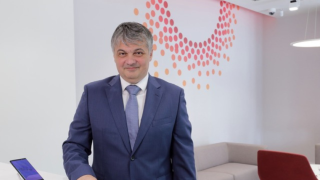In front of a packed audience, representatives from the AAE-1 consortium discussed the challenges of constructing one of the world's largest subsea cable systems, as well as the opportunities it will bring to the market.
"We want to be a blockbuster," said George Nikoloudis, COO at OTEGLOBE. "We hope there's going to be sequels."
Stretching approximately 25,000km, AAE-1 has a design capacity of at least 32 to 40Tbps and utilises 100G technology - which is expected to improve the round-trip-delay between Hong Kong and Europe by 10ms compared to other subsea cable routes.
The panel talked at length about the consortium's "open access network" which connects carrier neutral PoPs in Hong Kong, Singapore and France, and enables AAE-1 members to choose their preferred backhaul providers at the PoPs or cable landing stations.
"The distribution model is unique - as it gives members all the control of a private subsea cable system, but shares the risk as a consortium," said Mohamed Nasr, director of international affairs at Telecom Egypt.
AAE-1 will provide future proof connectivity to gateways in Gulf Countries (Oman, Qatar, Saudi Arabia and UAE), to Africa (Djibouti) and diverse subsea connectivity to emerging markets in Myanmar, Pakistan, Thailand, Vietnam and Yemen.
“AAE-1 will easily be able to connect to mainland China,” added Joseph Chan, VP of cable planning at PCCW Global.
The panel confirmed the project is on target to meet its expected RFS date of H2 2016.
The roundtable was moderated by Ilissa Miller, CEO at IMPR, and other panellists included Omar Alzaabi, VP, product and capacity management at Etisalat and Guiseppe Sini, chief sales and marketing officer, Retelit.




